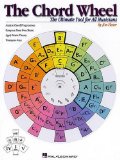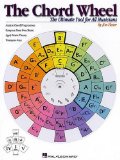TheGuitarLesson.com
This post appeared first at Learn Chord Progressions on Guitar on TheGuitarLesson.com, thanks for reading.
Learning chord progressions will be one of the first things beginner guitarists will want to do, since once you learn some chords and strumming, you’ll be able to make real music, good sounding music by playing chord progressions. Once you learn the underlying theory behind chords and scales, you’ll be able to make up literally thousands of chord progressions on your own, so it really is a worthwhile investment of your time.
Strictly speaking, chord progressions are a series of musical chords that aim to establish a tonality founded on a key (chord progressions can be played in any key). All scales contain 7 musical notes, and finding the right chord progression in a given key is just a matter of calculating the chords on a given scale. You can also add additional notes to the chords while playing chord progressions, allowing for a virtually unlimited number of possible progressions.
How to Build Chord Progressions on Guitar
- Determine the key you want to play your chord progression in.
- Number the chords in the chord scale with Roman numerals: I – ii – iii – IV – V – vi – vii. Keep in mind that the first, fourth and fifth chords in the chord scale will be major, while the second, third and sixth chords will be minor. The seventh chord will be a diminished chord, or sometimes a minor chord, whichever sounds good.
- Once you figured out the chords in your chord scale, pick any popular chord progression, or make one up on your own, and either strum the chords in sequence, or arpeggiate the notes of the chords.
Popular Chord Progressions
- The ever popular I – IV – V progression, which can be played in many ways, especially when you start adding extra notes to the chords (I – IV – I – V, I – I – IV – V, I – IV – V – IV, etc.). Thousands of songs use this chord progression, showing you that the possibilities are endless, even with just 3 chords. (We have some easy guitar song lessons that use this progression as well.)
- I – vi – ii – V
- I – IV – viio – iii – vi – ii – V – I
Remember that you can transpose chord progressions into any key. For example, the progression I – IV – V in the key of A would be A – D – E, while in the key of C, the chords will be C – F – G. Once you know the formula for the progression itself, you can find the chords to play along the chord scale.
There are a bunch of useful tools for beginners to learn chord progressions, such as the Chord Wheel and learn guitar posters
.
TheGuitarLesson.com is your source for beginner guitar lessons.
Read More
This article is from an external source and may contain external links not controlled by Empeda Music.


